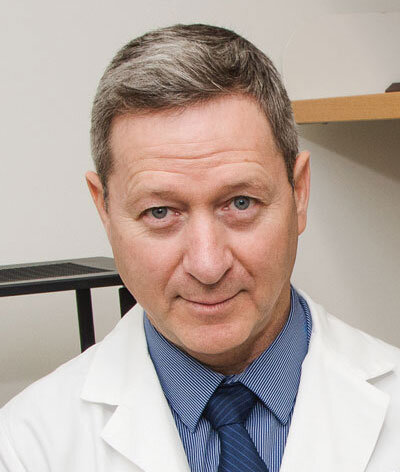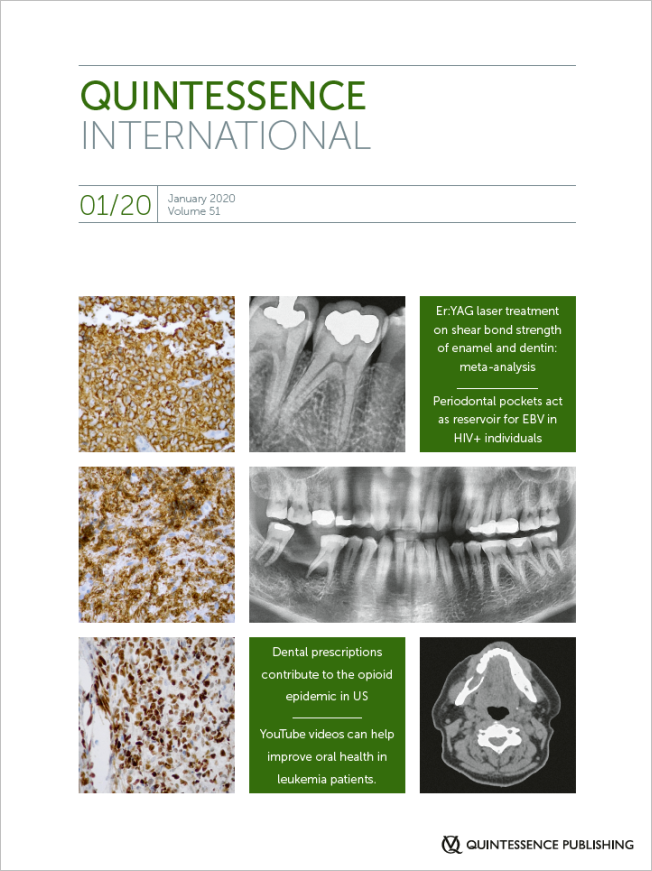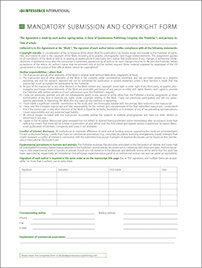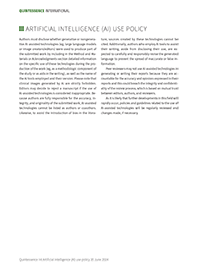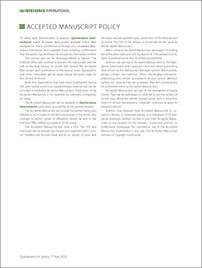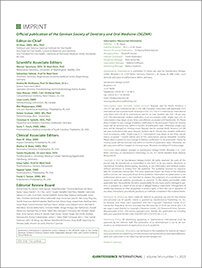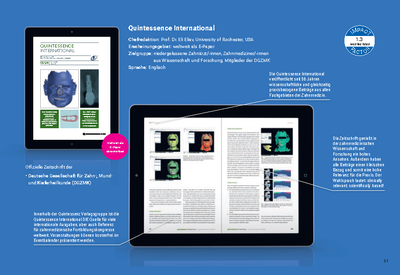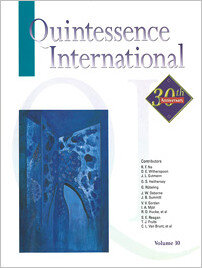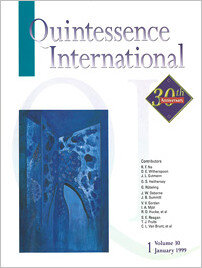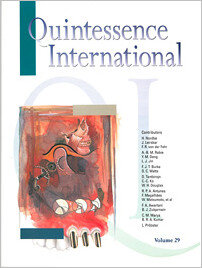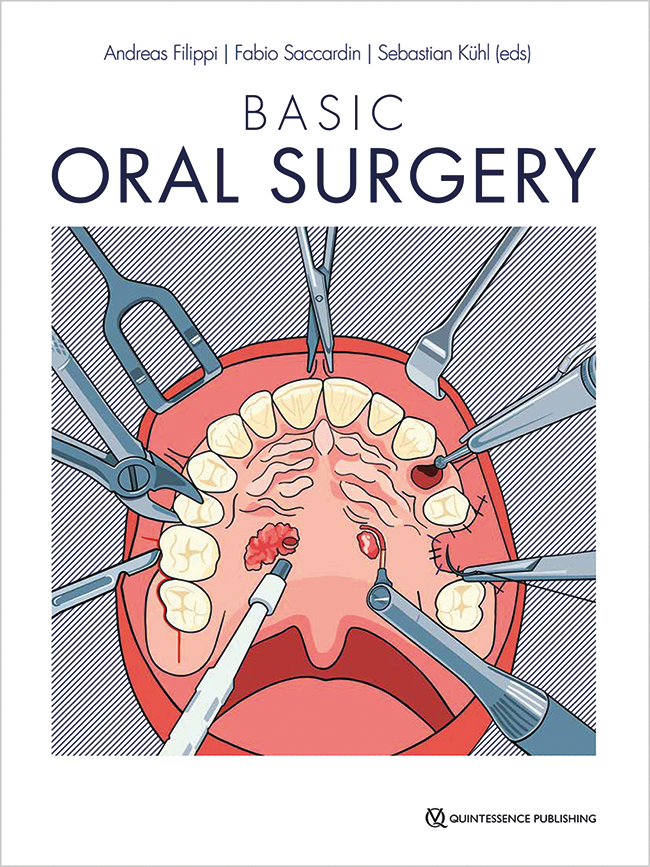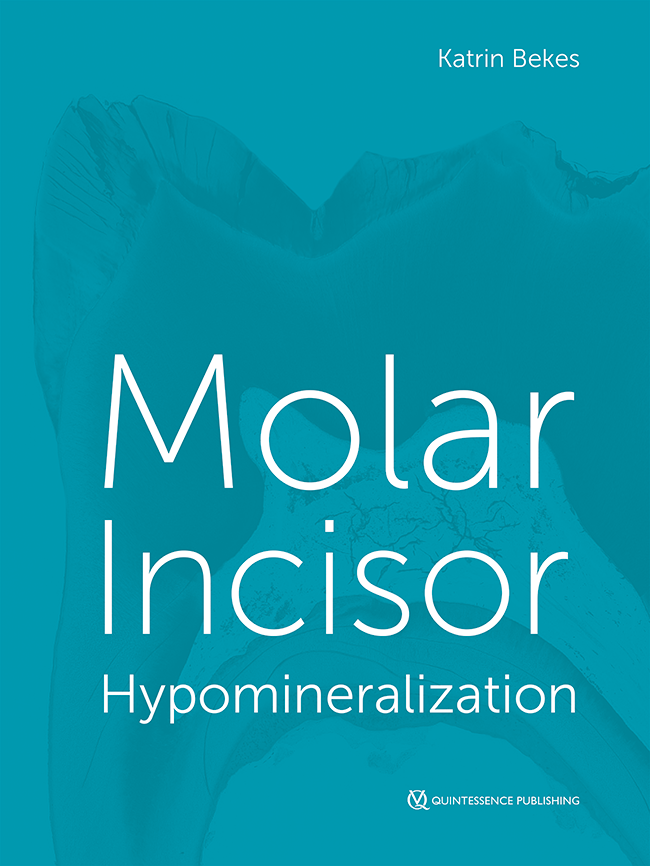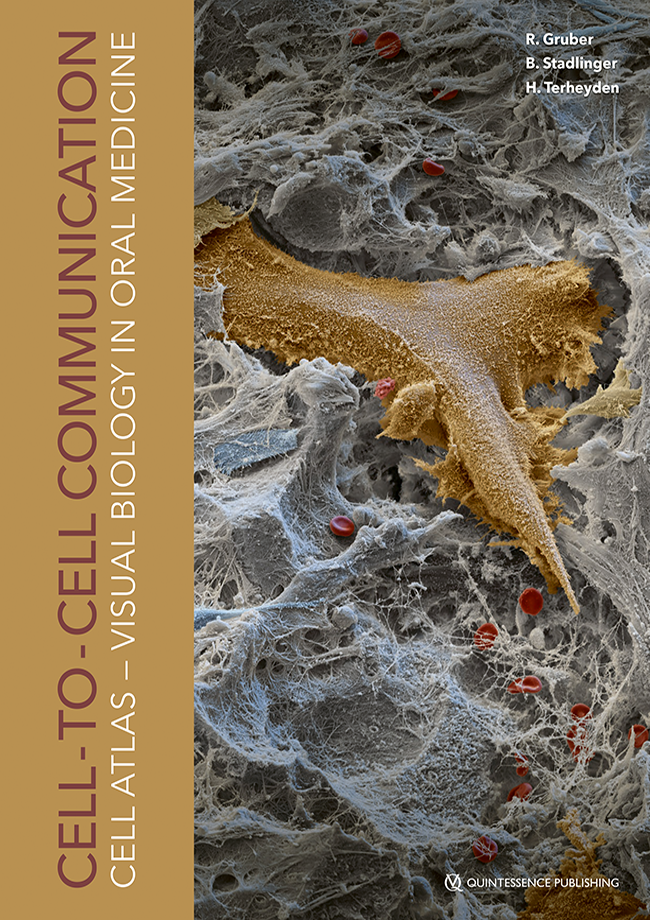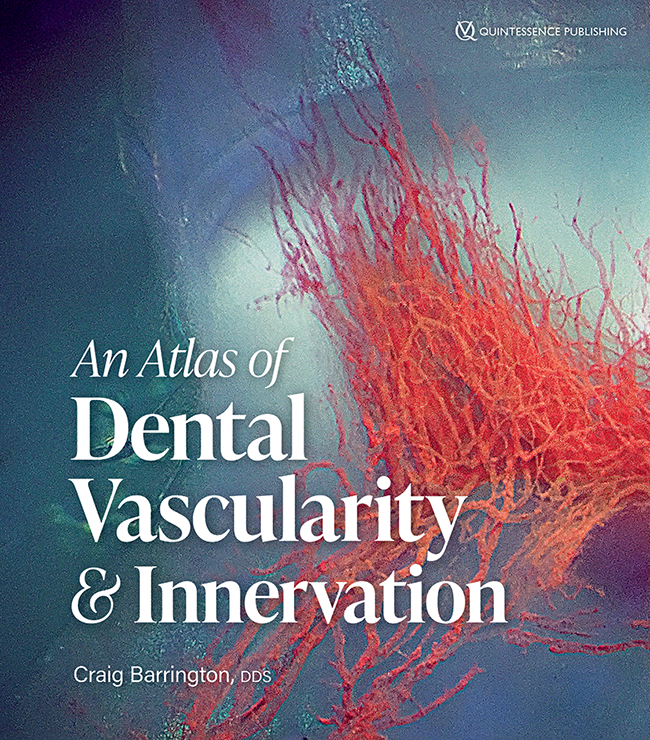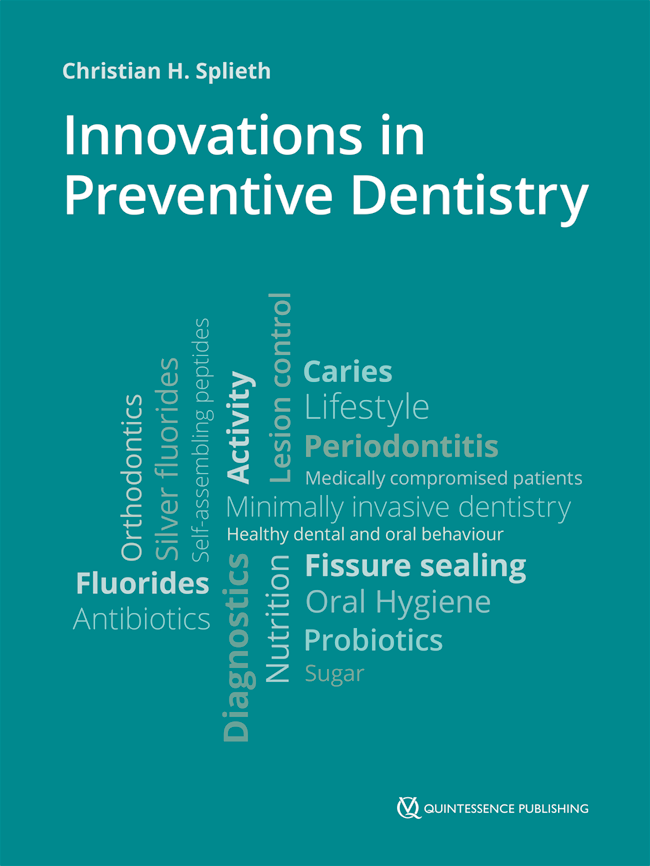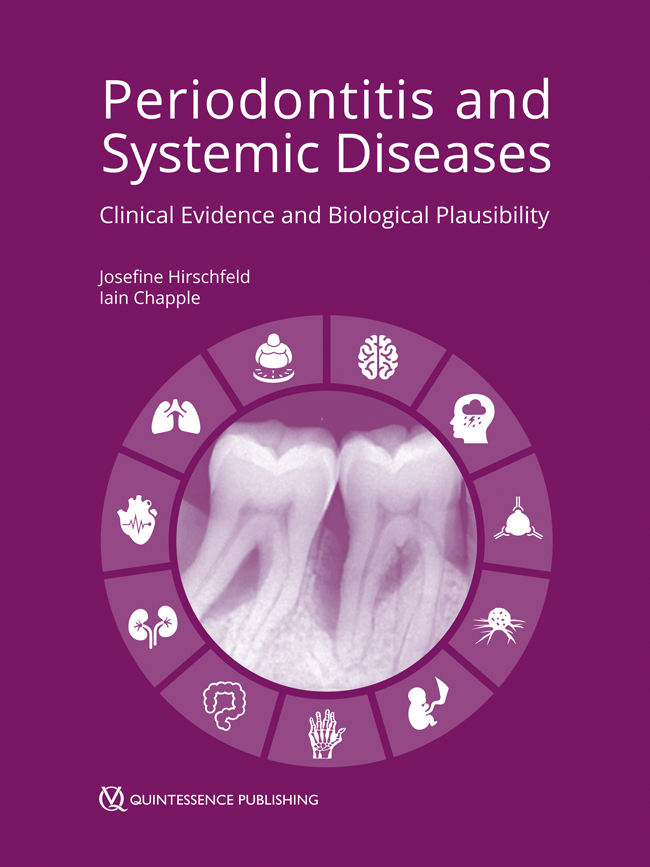Language: EnglishWathen, William F.Language: EnglishNicholls, JackPages 155-161, Language: EnglishCaughman / Frazier / HaywoodPatients who present with a single discolored tooth represent a significant restorative challenge. These case reports describe an economic and conservative treatment option for these patients. The situations presented demonstrate techniques for bleaching with carbamide peroxide in a traditional nightguard or with an inside-outside technique to achieve acceptable esthetic results on isolated nonvital discolored teeth. Although these techniques may not be effective in all cases, they do not compromise or eliminate any future treatment options.
Pages 163-168, Language: EnglishDonly / Jensen / Triolo / ChanObjective: The purpose of this study was to evaluate the clinical performance of Concept indirect posterior heat- and pressure-polymerized restorative material and compare it to the performance of cast gold. Method and materials: Inlays and onlays placed in a standardized manner as part of a clinical study were evaluated at 7 years. Eighteen patients (45%) who had received 36 Concept restorations returned and were evaluated using the US Public Health Service criteria. Restorations were evaluated in seven categories as the percentage receiving Alfa (ideal), Bravo (clinically acceptable), or Charlie (clinical unacceptable) scores or as restoration no longer present. Fourteen of the restorations were cemented with Heliobond bonding resin and 13 were cemented with Special Bond bonding resin. Each patient also received a cast-gold restoration for comparison Results: Concept restorations received scores of Alfa at the following rates: color match, 64%; interfacial staining, 47%; secondary caries, 75%; wear, 58%; marginal inte grity, 64%; surface texture, 72%; and axial contour, 58% (in 14% this category was not applicable because they were Class I restorations). Nine Concept restorations (25%) were no longer persent. Fifteen of 18 gold restorations were present at this recall. Statistical analysis indicated no significant differences in any categories between the two bonding resins used with Concept restorative material and the gold restorations. Conclusion: At 7 years in vivo, the Concept indirect posterior restorative system yields clinically acceptable restorations, particularly in premolars.
Pages 169-173, Language: EnglishSetcos / Tarim / SuzukiObjective: There is a demand for more efficient and finer polishing of resin composite restorations. This study compared the use of some new systems, with new or reduced numbers of abrasive instruments, to polish representative resin composites. Method and materials: Super-Snap Rainbow Technique Kit, Sof-Lex Pop-On System, and Enhance Finishing and Polishing System were used to prepare the surfaces of blocks of seven different hybrid or micofilled resin composites. For each system, three instruments were used for 30 seconds each in a standard manner. The average surface roughness of the polished surfaces was determined by profilometer. Results: Visually, all surfaces were of clinically acceptable luster. By profilometer ranking, the Super-Snap Rainbow Kit produced the smoothest surfaces, followed by the Sof-Lex Pop-On System disks (which were not statistically different), and the Enhance System. Conclusion: The Super-Snap Rainbow Technique Kit and Sof-Lex Pop-On System provided the smoothest surfaces for all the composites tested. For several composites, the Enhance System provided less smooth surfaces, but these were also clinically acceptable.
Pages 174-178, Language: EnglishBasting / SerraThe diagnosis of occlusal caries and the initiation of more effective treatment present a considerable challenge. Caries not only has decreased in prevalence, but also has changed in pattern and in progression because of the increased use of fluorides. Correct diagnosis is crucial, distinguishing lesions that can be arrested by noninvasive treatment from those that may justify restorative treatment. For incipient lesions, it is necessary to improve the patient's home care preventive methods, to apply fluroide or other prophylactic agents, or even to seal fissures, preserving the maximum amount of sound tooth structure. This article discusses the diagnosis of occlusal caries and noninvasive treatments for the management of early caries.
Pages 179-184, Language: EnglishMurchison / Charlton / MooreObjective: This in vitro investigation aimed to determine the radiopacity of eight recently introduced flowable restorative resin composites and to compare their radiodensities to those of enamel, dentin, and a widely used composite marketed for universal application in anterior and posterior teeth. Method and materials: A total of 45 composite specimens were fabricated in cylindrical molds and exposed to a curing light for 120 seconds. Two methods were used to determine radiopacity: a transmission densitometer and a computer-assisted densitometric image analysis station. Results: Of the eight flowable resin composites tested, only three exhibited a radiopacity equal to or greater than that of enamel, a widely followed guideline for clinicians' diagnostic ability. The radiopacity of the remaining five materials was not statistically significantly greater than that of dentin. Conclusion: The level of radiopacity of the tested flowable composites was variable; those with low radiodensity should be avoided in Class II restorations, where a clear determination of recurrent caries by the examining clinicians could be compromised.
Pages 185-191, Language: EnglishOsborne / SummittObjective: The purpose of this study was to assess, via a photoelastic resin, the expansion of gallium restorative alloys under conditions similar to those found in the clinical situation. Method and materials: Two gallium alloys, Galloy and Gallium GF II, were tested, along with a high-copper amalgam, Dispersalloy, and a low-copper alloy, New True Dentalloy. The gallium alloys were tested as (1) uncontaminated, (2) contaminated with water, Ringer's solution, or a cell culture medium, and (3) immersed in these fluids at times ranging from 5 minutes to 3 days. The gallium and amalgam alloys were condensed in a hole drilled in a block of photoelastic resin and observed for 3 months. The amount of stress was recorded on color slides taken through polarized light at regular intervals. The photographs of the color bifringen stress patterns at 1 and 3 months were ranked by two independent evaluators for least to greatest observed stress. Results: Disperalloy had the least expansion, followed by uncontaminated Galloy and Galloy contaminated with water. Next came Galloy contaminated with cell culture medium, Galloy contaminated with Ringer's solution, contaminated New True Dentalloy, and Gallium GF II. The last group was Gallium GF II contaminated with any of the three solutions. Both gallium alloys immersed in the three fluids showed a strong edge effect, and by 6 weeks many of the gallium alloys had extruded from the mold. Conclusion: These results corroborate the findings of some clinical studies that have shown that these gallium alloys can potentially cause catastrophic failures.
Pages 193-197, Language: EnglishBertacchini / Abate / Blank / Baglieto / MacchiObjective: The degree of solubility and the fluoride release of glass-ionomer cements and compomers were determined as a function of time. Method and materials: Three conventional glass-ionomer cements, three hybrid ionomers, and two compomers were included in the study. Disk-shaped specimens were prepared and immersed in a lactic acid solution. Solubility was evaluated from determinations of loss of mass as a function of time. To evaluate fluoride release, similar specimens were immersed in 50 mL of deionized water to which 50 mL of buffer solution was added. A fluoride ion detector was used to read the concentration of fluoride ion in the overall solution at different times after immersion. Results: Material and time factors had a significant influence on results. The compomers showed less corrosion and fluoride release than the ionomers. Some correlation was found between solubility and fluoride leakage values. Conclusion: Components of both the ionomers and compomers that were studied can dissolve in water. The materials leak fluoride ions in amounts that differ according to the characteristics of the individual products.
Pages 199-208, Language: EnglishXu / Giuseppetti / Eichmiller / IvesObjective: This study investigated the wear resistance of a mercury-free silver direct-filling material and a dental amalgam. Method and materials: A precipitated silver powder was rinsed with dilute fluoboric acid and consolidated into a cohesive solid. For tooth cavity restoration and flexural testing, the silver was consolidated with a dental amalgam plugger at a load of 15 N. For wear testing, because of the relatively large specimen size, the silver was pressed at a rpessure of 150 MPa, yielding a density similar to that obtained by hand consolidation. Results: The silver had a flexural strength twice that of amalgam. Pin-on-disk wear resulted in a smooth surface and hardening in silver, as measured by indentation inside the wea r tracks, in contrast to the damage that was found in amalgam. The wear track cross-sectional area (n = 12) at 10 to the sixth power revolutions was not statistically significantly different among amalgam, polished silver, and burnished silver. Conclusion: The consolidated silver exhibited work hardening and surface densification during wear and, as a result, was more resistant to wear-induced damage than amalgam.



